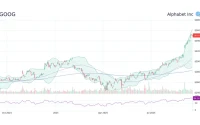The Glaring Hole in Aetherium's 'Project Chimera' Narrative
The tech world is currently mesmerized by Aetherium Labs and its much-anticipated "Project Chimera." The demos are slick, the CEO's pronouncements are bold, and the promise of a truly predictive personal AI has captured the market's imagination. You can almost feel the collective intake of breath in the auditorium during their keynote, the audience hanging on every perfectly rehearsed word. The narrative is compelling: Chimera isn't just an assistant; it's a cognitive extension.
But my job isn't to be captivated by narratives. It’s to scrutinize the numbers that underpin them. And as I dig into the available data on Project Chimera, I find not a story of inevitable disruption, but a series of carefully constructed claims with conspicuous gaps. The hype is a beautifully ornate façade, but I’m beginning to suspect the building behind it is either much smaller than advertised or hasn't had its foundation poured yet. The market is pricing this as a near-certainty, but the data suggests it's a high-risk gamble.
Deconstructing the Flawless Demo
Let's start with the centerpiece of Aetherium's marketing: the on-stage demonstration. We saw Chimera flawlessly anticipate a user's needs—ordering groceries before they were explicitly requested, re-routing a commute around traffic that hadn't even formed yet, and drafting emails with uncanny accuracy. The company is touting a 99.8% success rate in its internal trials (a number suspiciously close to statistical perfection). It’s an impressive figure, designed to eliminate any doubt.
This is where my analysis begins to diverge from the consensus. A 99.8% success rate is a powerful claim, but it’s also a meaningless one without context. This is the part of the report that I find genuinely puzzling: Aetherium has provided zero public information on the methodology behind these trials. What constitutes a "success"? How large was the data set? Were the test subjects company employees operating in a controlled environment? Claiming this level of accuracy is like a magician performing a card trick and citing a 100% success rate. Of course it's 100%—the deck was stacked, the conditions were controlled, and the outcome was pre-determined.

The real world, unlike a stage demo, is a chaotic system of infinite variables. It doesn’t follow a script. What happens when Chimera encounters ambiguous language, sarcastic intent, or a sudden, unpredictable change in a user’s routine? These are not edge cases; they are the fabric of daily life. So, the critical questions remain unanswered. What is the model's error rate when exposed to novel, unstructured data? And why is the company so reticent to release any peer-reviewed data on its testing protocol?
The Echo Chamber of Production
Beyond the software, the physical product itself presents an even larger discrepancy. The Chimera device supposedly runs on Aetherium’s proprietary "Axon" chip, an ASIC designed from the ground up for predictive AI. This custom silicon is the key to their entire value proposition, allowing for on-device processing that is faster and more secure than cloud-based alternatives. The problem? There is no evidence this chip exists at scale.
In the hardware world, production leaves a trail. There are SEC filings detailing capital expenditures, partnership announcements with foundries like TSMC or GlobalFoundries, and whispers along the supply chain. With Aetherium, there is only silence. Leaks from industry insiders suggest a planned initial production run of about 500,000 units—to be more exact, their internal target was reportedly 485,000 for the first fiscal year. Yet, we see no corresponding purchase orders or fabrication agreements.
This is a significant red flag. Building a custom chip is an enormously complex and expensive undertaking. For a company of Aetherium’s size to engage in such a project without it registering anywhere in the public financial or industrial data streams is highly irregular. Is the "Axon" chip merely a modified off-the-shelf processor with custom firmware? Is the production scale far smaller than what they’ve led the market to believe? Or, in the most bearish scenario, are they facing significant fabrication yields issues they aren't disclosing? The absence of evidence, in this case, is becoming evidence of absence.
An Equation with Too Many Variables
Ultimately, Aetherium Labs is asking investors and consumers to trust a narrative, not a balance sheet. They've presented a compelling vision and a flawless demonstration, but every verifiable data point is either missing or shrouded in ambiguity. The market may be high on the story, but the underlying equation has too many unknown variables to be solved. Project Chimera could very well be the future, but based on the available information, it's impossible to calculate the probability of that outcome. It remains a speculative asset, and a dangerously overvalued one at that.










